Recently, you have planted different vegetables in your edible garden and all the things go well. However, a potato bug infestation may create a feeling of worry since the pests are likely to come into sight at a certain point.
Potato bugs cause lots of confusion both among avid gardeners and pest management professionals. They refer to two pests, Colorado beetle and Jerusalem cricket which possess their distinct features.
Your gardening circles might have mentioned those potato pests. If you want to know them better, just keep scrolling. Our guide will also cover some great ways of controlling their populations.
Introduction to Potato Bug
The name itself is a little bit misleading. It is particularly applied to 2 types of bugs. Here, we use different names to help you identify them properly.
Colorado beetle (Leptinotarsa decemlineata) and Jerusalem cricket (Stenopelmatus fuscus) can quickly infest the garden. Moreover, they cause damage to precious vegetable crops.
These two insect pests are named so because of their favored diet. They love to feed on various crops in the garden including different potato parts such as foliage, roots, and tubers.
Colorado Potato Beetles
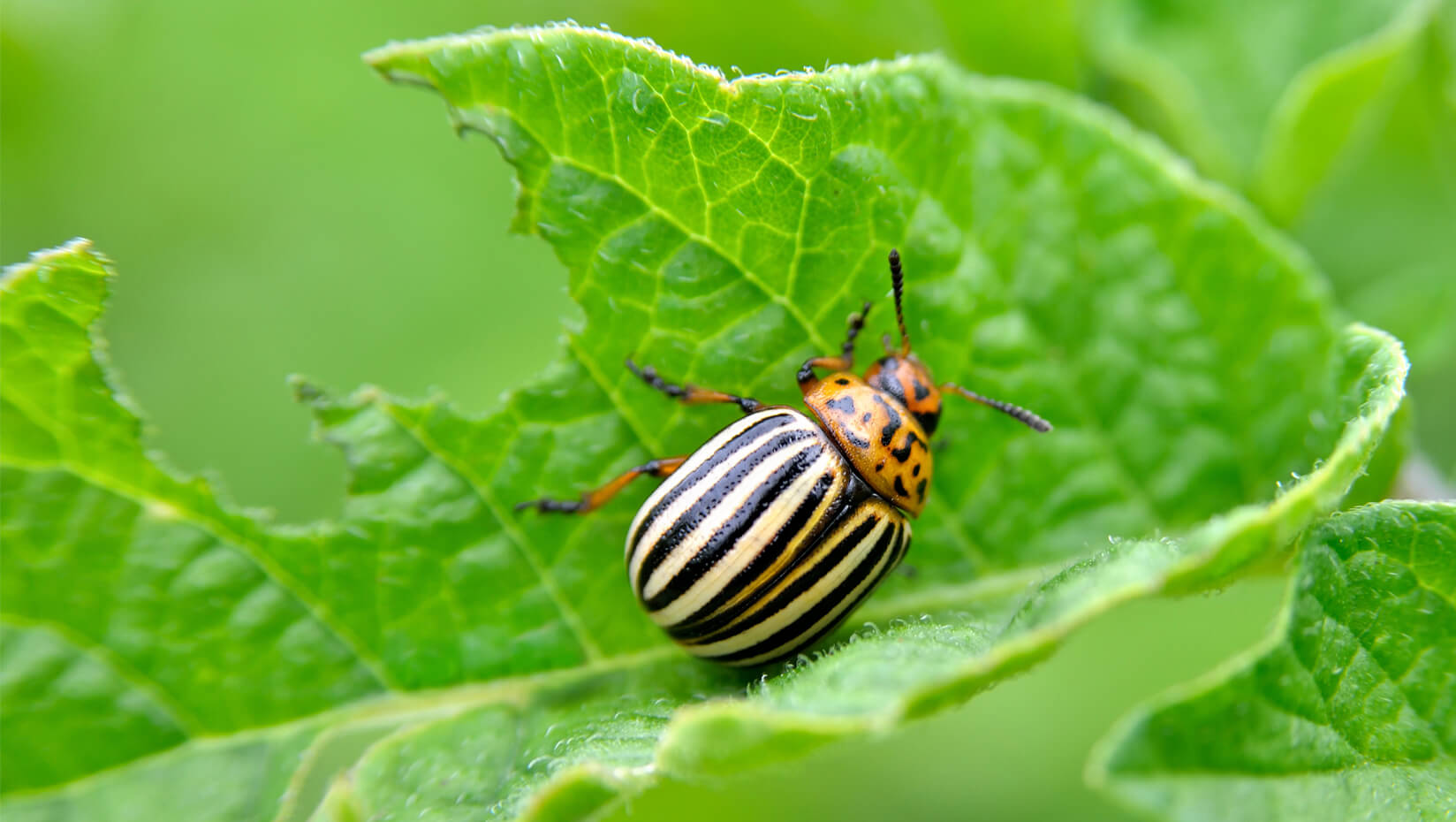
As the name indicates, these pests were first found in 1859 feasting on potato crops in Colorado. Then, they spread across the United States mainland rapidly.
Now, Colorado potato beetles are found in Alaska, Hawaii, Asia, and Europe. They become a serious pest for the commercial vegetable industry and home gardeners.
This potato bug typically overwinters underground. Talking about its life cycle, it normally starts in the spring once the eggs have been laid.
The female beetles lay around 30 orange eggs and attach them on the underside foliage with their yellow sticky excretions. They take 14 days to hatch. Once potato bug larvae have hatched, they munch on the crops.
Moreover, larvae continue growing for about 2 weeks and turn into pupae. Throughout their entire life, the female beetles lay up to 900 eggs. In general, these pests appear around the same time the crops begin to surface.
The process might take around 30 days between the pupae transforming into adults and eggs getting laid. This highly depends on the local weather. Colder climate definitely can impede it by another 2 weeks.
The immature ones become adults later on. After that, they mate and produce more eggs. In one year, there will be three Colorado potato beetle generations.
Jerusalem Crickets
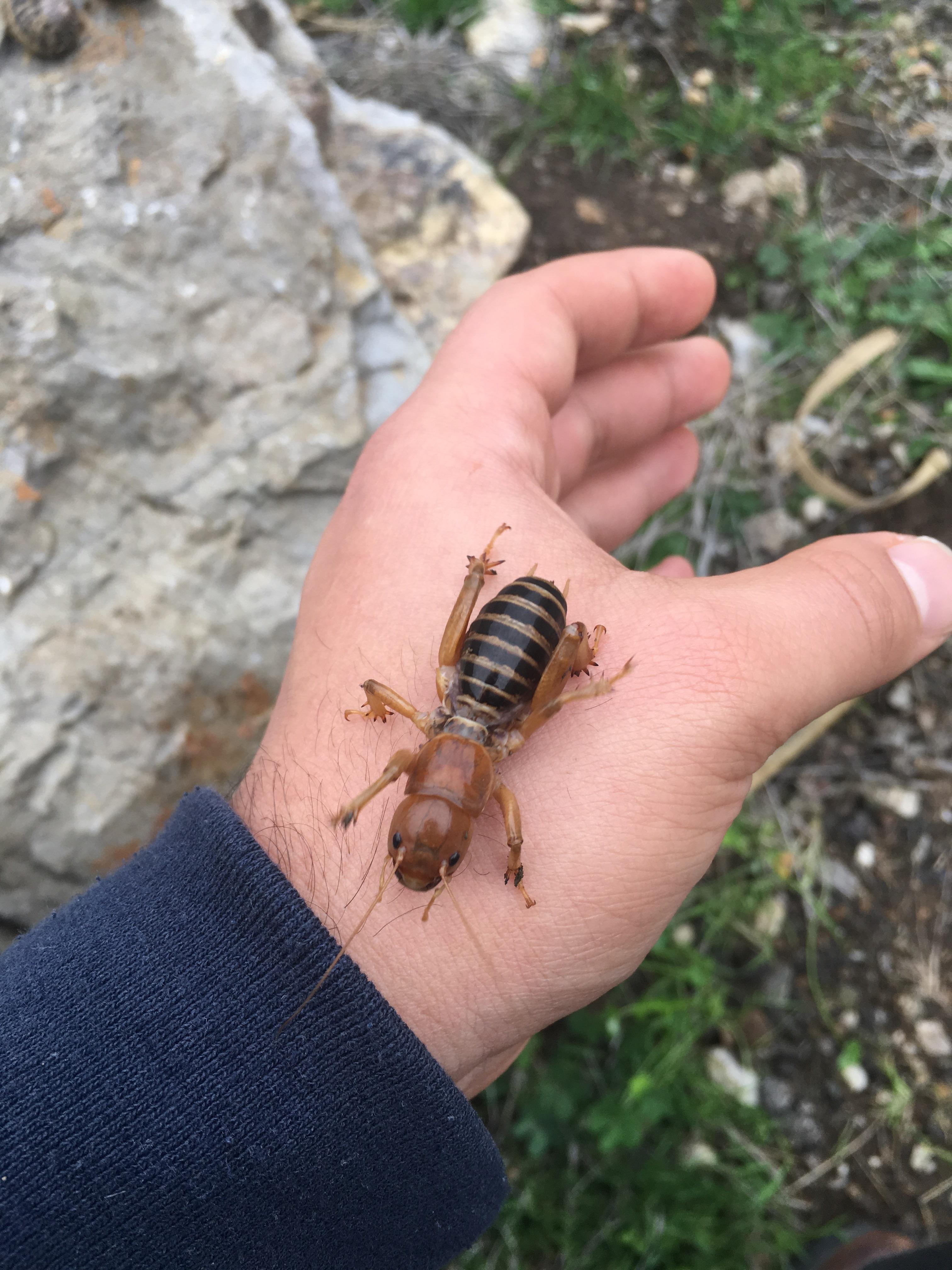
Despite their name, they are not actual crickets. These potato pests belong to the same insect order Orthoptera and family Stenopelmatidae.
Unlike real mole crickets, these pests do not chirp. They create a hissing noise using their back legs across the midsection for repelling predators instead.
During the mating period, Jerusalem crickets sing a song like grasshoppers. They beat their bodies against the surface, creating a unique drumming sound to grab the mate’s attention.
Interestingly, the female Jerusalem crickets usually eat their mates after a complete mating process. Next, the eggs will be laid by them in shallow ground holes.
This potato bug is mostly found in the southwestern and western United States. It can be spotted in Mexico as well. Despite its popular name, the cricket does not hail from Jerusalem.
Furthermore, this potato bug is a nocturnal insect. That’s the reason it prefers dark places and loves digging into organic material piles. The creature dwells below the ground surface, too.
How to Identify Potato Bug
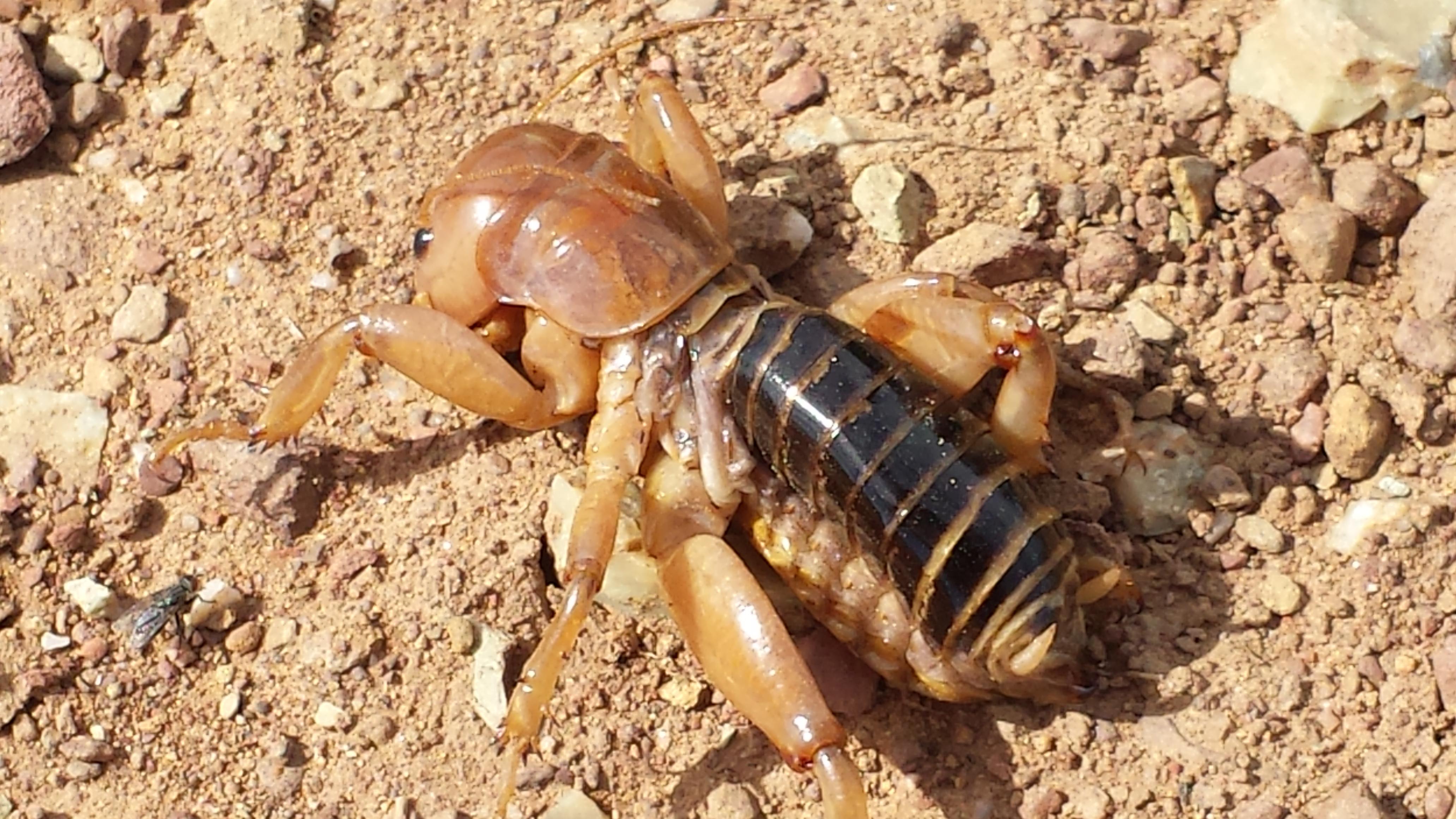
Colorado Potato Beetle
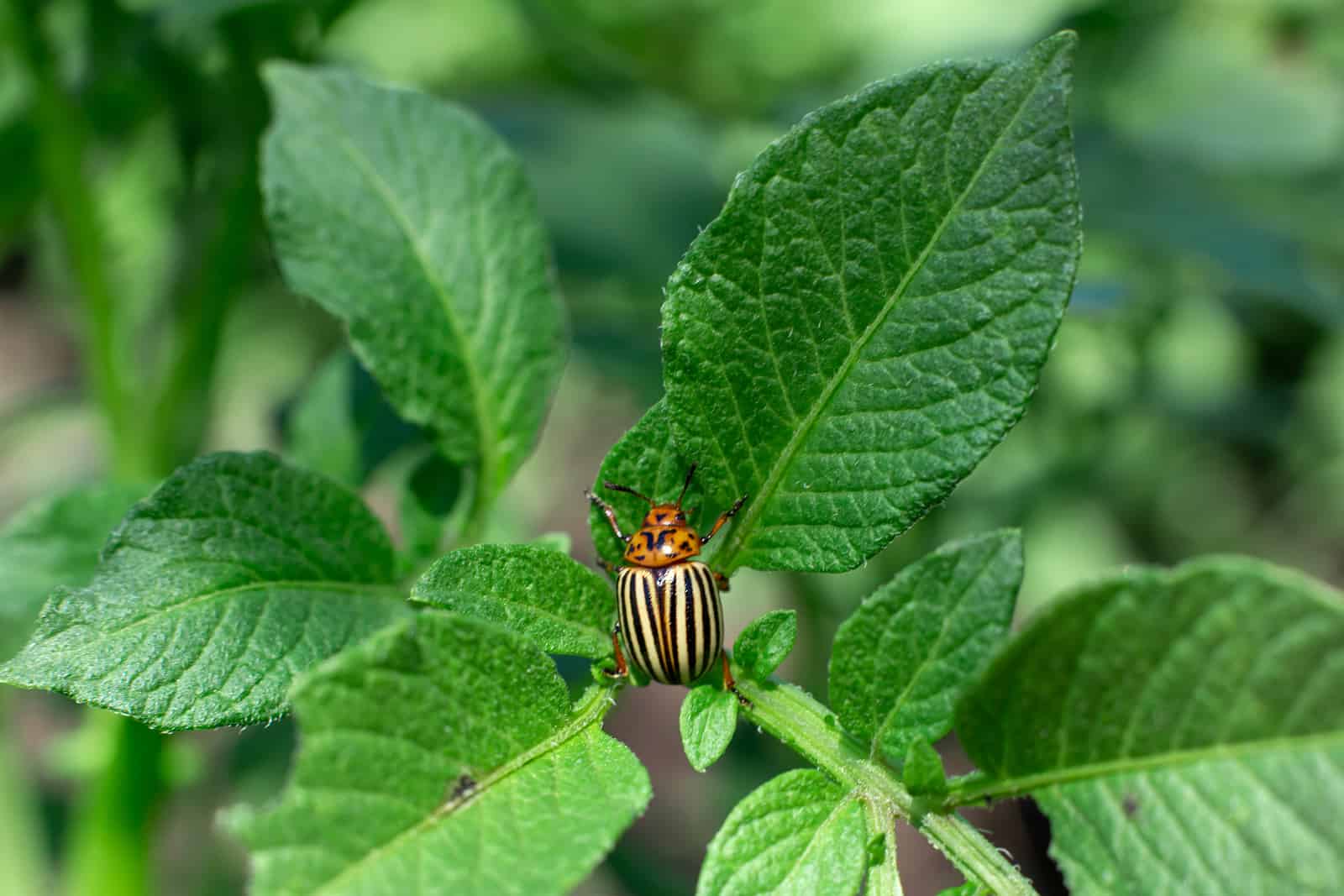
Colorado beetle is really small, just about ⅜ inch (9.5 mm) long. This predominantly orange potato bug comes with a tiny head and a round-shaped body. It has creamy-white and black stripes as well.
Moreover, the head of the Colorado beetle features antenna and irregular spots in black. Since this little potato bug has hard wings, it can fly. That means the pest presents the chance of swarm invading an area.
Jerusalem Cricket
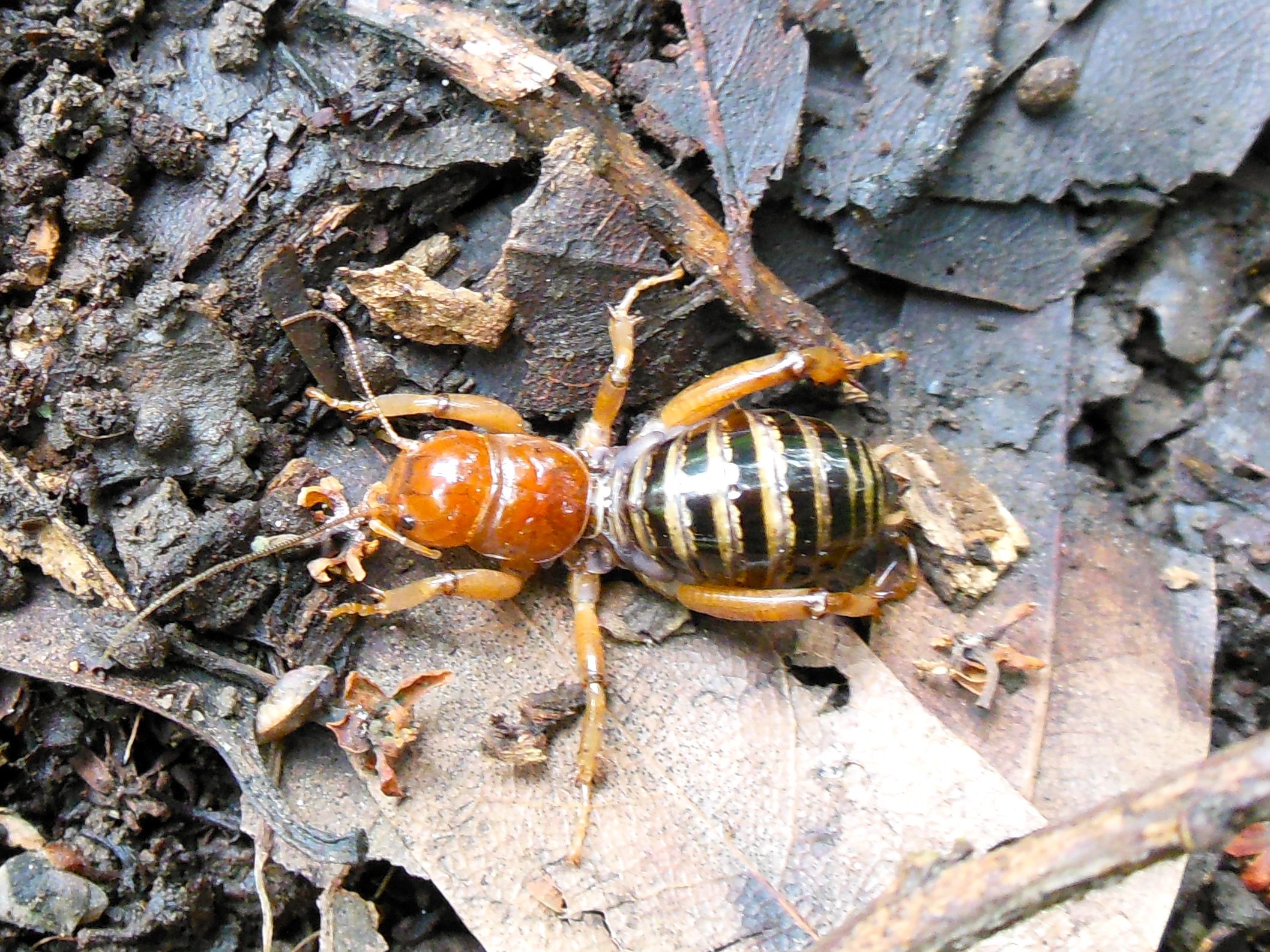
Jerusalem cricket looks like an alien because of the big head for its small body. Compared to Colorado beetle, it is larger and grows up to 2 ½ inches long. This potato bug also boasts huge jaws.
Furthermore, Jerusalem cricket features thick, spiny limbs that come in amber-yellow and red. They are normally used to burrow into the dirt.
This creature has an abdomen boasting light brown and black stripes with small ridges. Additionally, its back legs are reminiscent of the ones owned by cricket.
How to Know If You are Dealing with Potato Bug Infestation
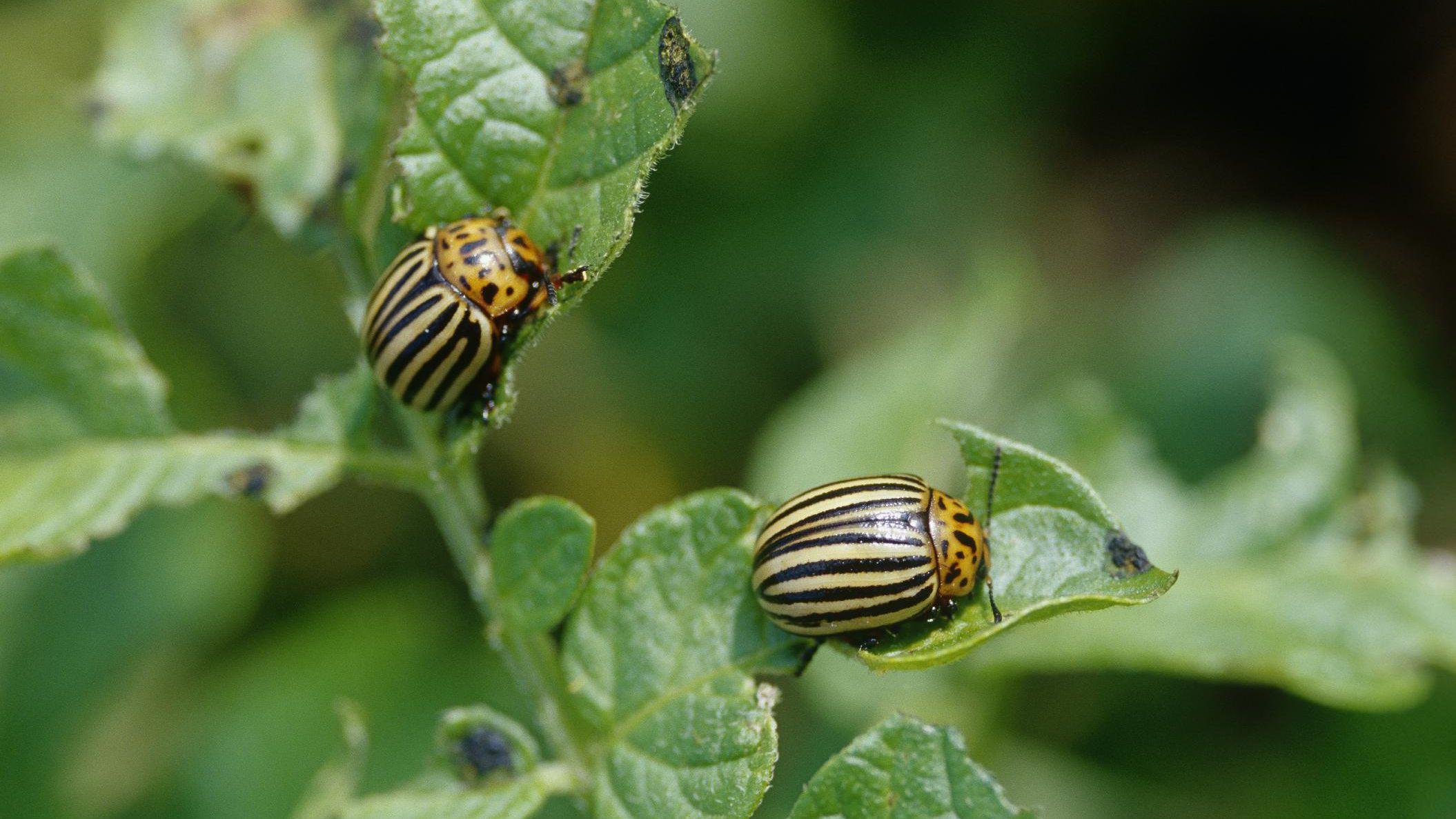
As we mentioned before, potato bugs spend winter in the ground. They appear in late spring, about the same your crops emerge. Those pests create and lay tiny, orange eggs on the foliage base.
Furthermore, young larvae come in dark red with black spots. The older ones are salmon to pink. They also feature blackheads on their bodies.
During warmer months, the larvae become mature in 10 days. For areas with hot summers, those potato pests may produce two or three generations per year.
You can tell there is a potato bug problem if the flower buds get damaged. They are the most delicate parts, that’s why the larvae consume them first. After enjoying those, the immature pests nibble on the leaves.
The next question is probably what do potato bugs eat. This depends on which pest you are looking into. Besides munching on the potatoes, they devour other foods.
Colorado Potato Beetle
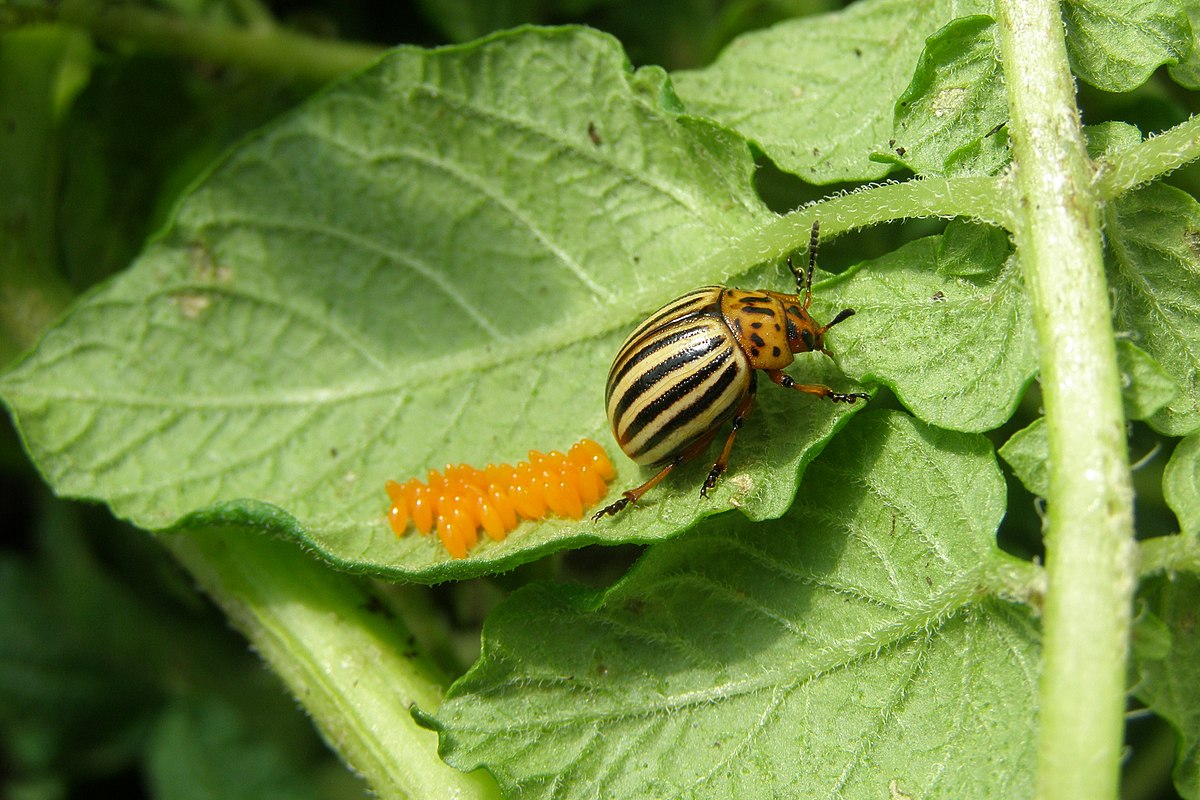
Colorado beetles certainly are more damaging than Jerusalem crickets. They love potatoes and attach their eggs on the potato foliage. After that, those tiny creatures feast on the tubers and plants.
Moreover, Colorado beetles create a great number of eggs in each period. They multiply quickly and then become a major threat to your potato crops.
Even though potatoes are Colorado beetles’ preferred diet, they eat other foods. Those pests also snack on pepper, eggplants, and tomatoes.
Jerusalem Cricket

Although many people dub Jerusalem crickets as the potato bugs, actually they are not serious pests for the crops. On very rare occasions, those creatures become a big problem in the vegetable garden and agricultural fields.
Jerusalem crickets lay their tiny eggs in the soil, so they will consume the closest stuff. Those creatures prefer to feed on fruits, little pests, plant roots, dead insects, tubers, and meats.
Are Potato Bugs Bad?
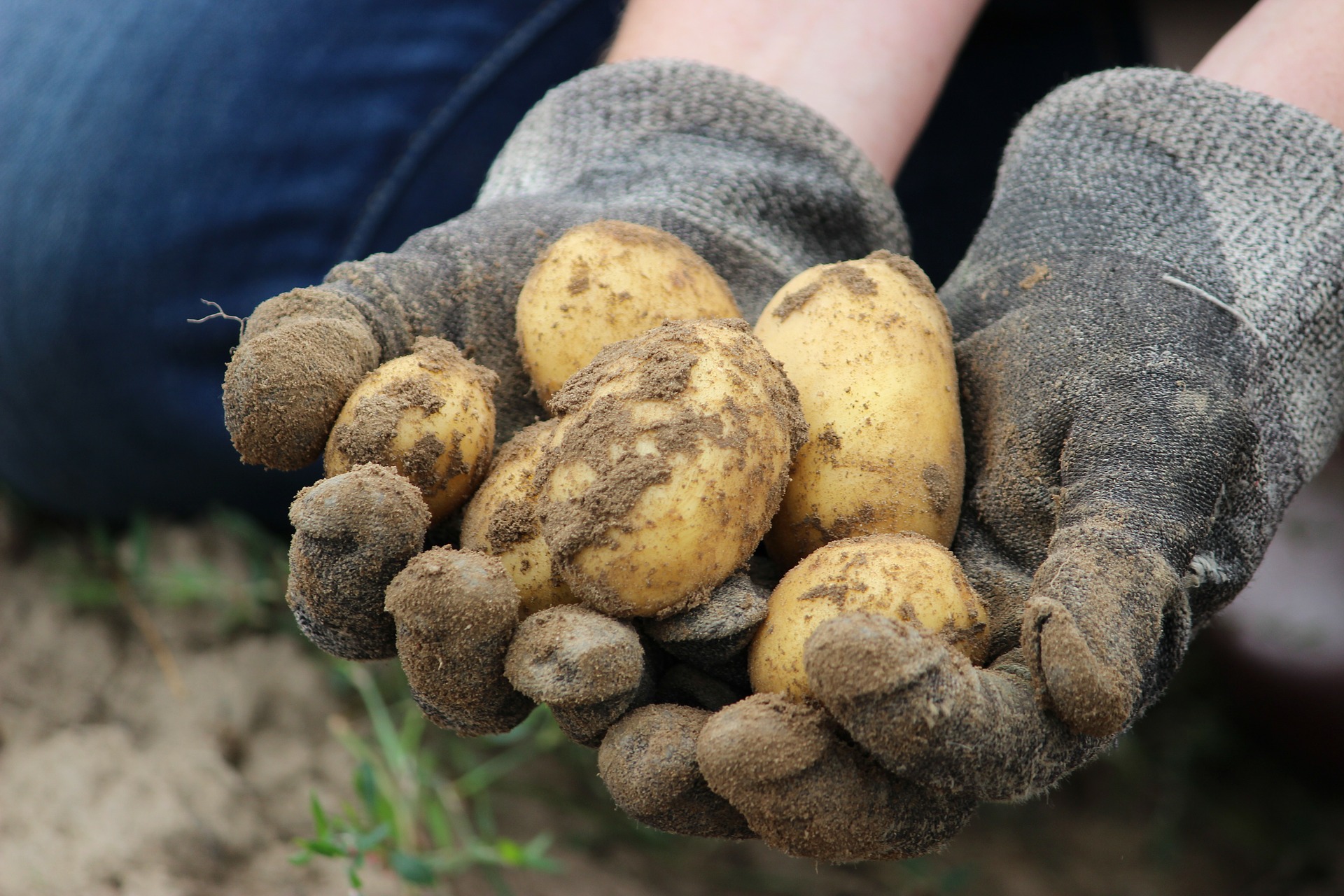
Potato bugs eat the stems and foliage of potato crops. If these pests come in huge numbers, they can defoliate your plants entirely. Those creatures rarely form a large infestation, too.
Furthermore, potato plants normally can resist infestations of the pests in the early growing season. However, as they mature, the crop damage is usually serious. That’s why you should examine yours regularly.
When Jerusalem crickets appear in swarms, they become a big threat. If you only find a few of them, eliminate the stuff by different means.
You can get rid of items where Jerusalem crickets reside such as old containers and woodpiles. Removing Colorado beetles requires more effort since they hatch in large numbers and can create severe plant damage.
Are Potato Bug Dangerous?
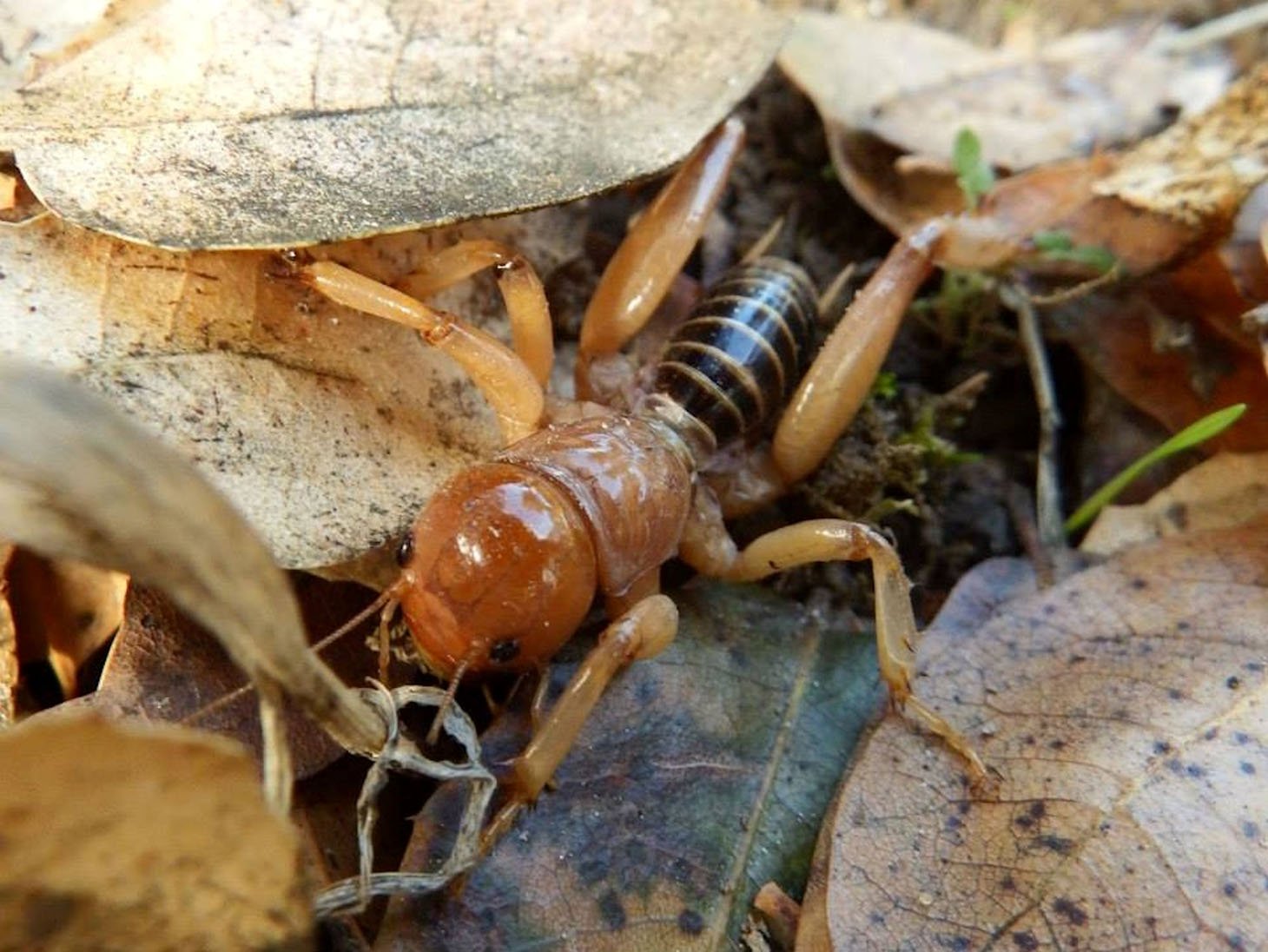
Neither kind of potato bug is hazardous, but Jerusalem crickets can give human beings a painful bite when being agitated. That’s the reason you shouldn’t disturb them. Just allow those pests to escape.
If you agitate Jerusalem crickets and back them into the corner. They can’t flee for sure. The worst thing is when their huge powerful jaws bite your skin hard.
By contrast, the Colorado beetles are practically not hazardous to humans. The thing you should concern with is their serious threat towards your potato crops.
It is important to keep the Colorado beetle populations under control. That way, they do not lay so many small eggs at a time and form a large infestation later. Fortunately, none of the potato bug bites is poisonous to human beings.
How to Successfully Get Rid of Potato Bug
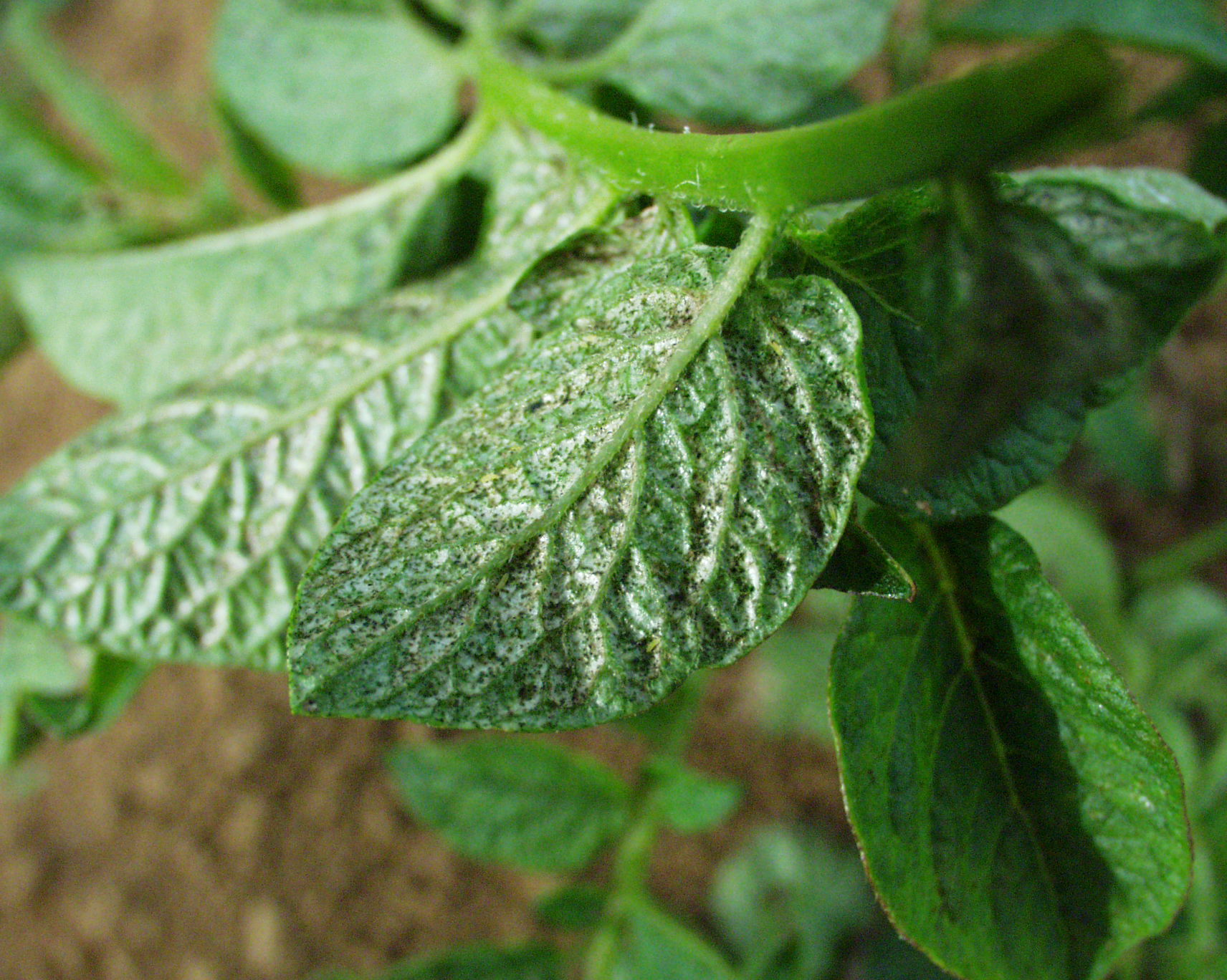
Potato bug prevention as well as control need different means depending on which type you are dealing with. Instead of simply spraying commercial pesticides onto them, we will show other safe yet effective methods.
These solutions feature a home remedy, too. Without further ado, here are some ways of eliminating potato bugs.
Colorado Potato Beetle
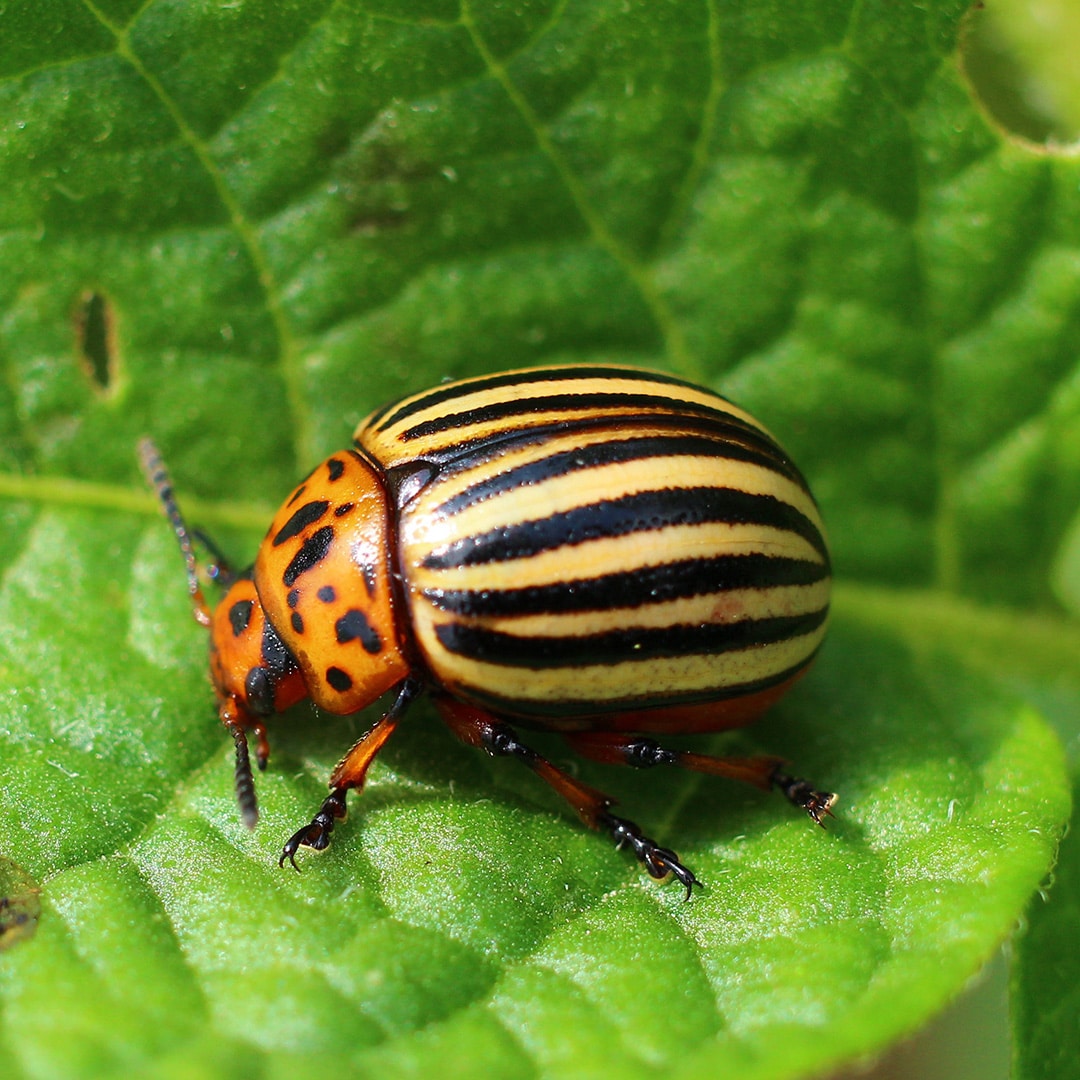
You can exterminate this potato bug through crop turning. Instead of growing nightshade plants, opt for their counterparts.
Some recommended crops are wasabi, sweet potatoes, parsnips, beets, sweet potatoes, horseradish, and garlic.
The crop rotation is such a great Colorado potato beetle control. This keeps the creatures from residing on the crops.
By turning what you grow regularly between the potatoes and herbs or grains, they will be uncomfortable.
To overcome a potato bug problem, you can introduce their natural predators such as box turtles, geese, chickens, ground beetles, ladybugs, parasitic wasps, and birds.
They will consume both larvae and eggs, then gradually remove the pests.
It is known that the easiest way to kill Colorado beetles entirely is by using other predators. Spiny soldiers and stink bugs will do all the pest removal work.
Get Rid of Potato Beetles
Another solution to get rid of potato beetles is trapping. You should make wide trenches in between the vegetation rows at a sharp angle.
Next, use plastic to cover them. This causes the pests to fall into them and become trapped.
If you spot Colorado beetles on potato plants, handpick and place them in the bucket. Don’t forget to fill it with soapy water.
The soap water method requires you to check the crops regularly for successful insect control. Aside from picking the beetles, pick their orange eggs too.
Prevent a potato bug infestation by covering your plants with organic mulches. They do not only repel the pests but also enhance soil fertility and suppress unwanted weeds.
The organic mulches are usually made of pine needles, bark, straw, grass clippings, or compost. The application is so easy. Just spread them over the soil surface.
Before planting potatoes, do your research. Some varieties like the ‘King Harry’ are Colorado beetle-resistant. They can repel the beetles due to hairy leaves which keep the potato pests from reaching.
Diatomaceous earth can be used to remove Colorado beetles. Lay that sand over the potatoes or around their bottom. It discourages those flying pests from feasting on your crops.
Furthermore, diatomaceous earth is eco-friendly. This method is also suited to the area with plenty of rain since it won’t diffuse in water.
Most pesticides like deltamethrin, imidacloprid, pyrethrins, and cypermethrin generally won’t get rid of Colorado potato beetles. However, those that contain spinosad, bifenthrin, and Bacillus thuringiensis work perfectly on them.
Compared to bifenthrin-based insecticide, spinosad is safer. In case you don’t have to eliminate the potato bug immediately, opt for it.
The bifenthrin-containing pesticide kills Colorado beetles quickly. Meanwhile, Bacillus thuringiensis will paralyze their gut. Then, it starves and destroys them slowly. Be sure you purchase special Bt for potato bugs.
Jerusalem Crickets
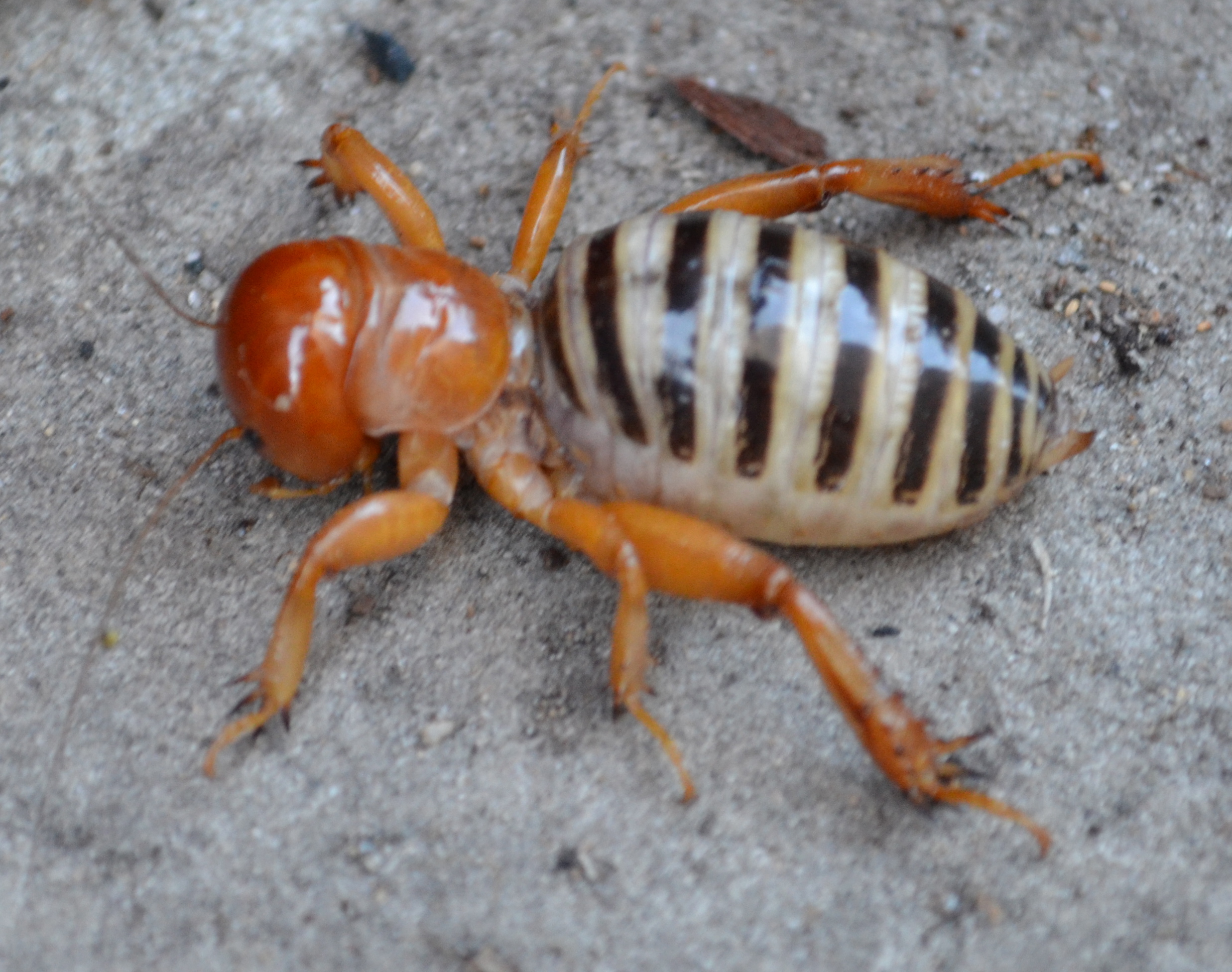
On most occasions, Jerusalem crickets won’t come in large clusters. This makes pest elimination easier for sure. You can remove them by hand. Another option is to trap the potato bugs using wide trenches.
If you desire an environmentally-friendly pest control, go for diatomaceous earth. Since the sand contains fossilized algae, it won’t cause any damage to humans and potatoes.
Normally, diatomaceous earth doesn’t cost more than $10. Spread a small amount of it around crop fields or vegetable garden. Wait until Jerusalem crickets dehydrate and then die.
You can also use neem oil as an organic insecticide. That consists of Azadirachtin, an insect chemical deterrent. These ingredients can prevent Jerusalem crickets to feast on the crop.
To create a homemade plant spray, mix 1 gallon of water with 1 tablespoon of dish soap and 4 teaspoons of neem oil. Once everything is combined thoroughly, spray the solution on the plants lightly.
In case you have a serious potato bug infestation, do not worry. Exterminate the Jerusalem crickets by spraying them with Talstar. This bifenthrin-based insecticide works effectively on those pests.
After reading our article, we hope you already become an expert gardener. With those potato bug control methods, growing your crops wouldn’t be an intimidating job for sure. Let’s start with gardening!
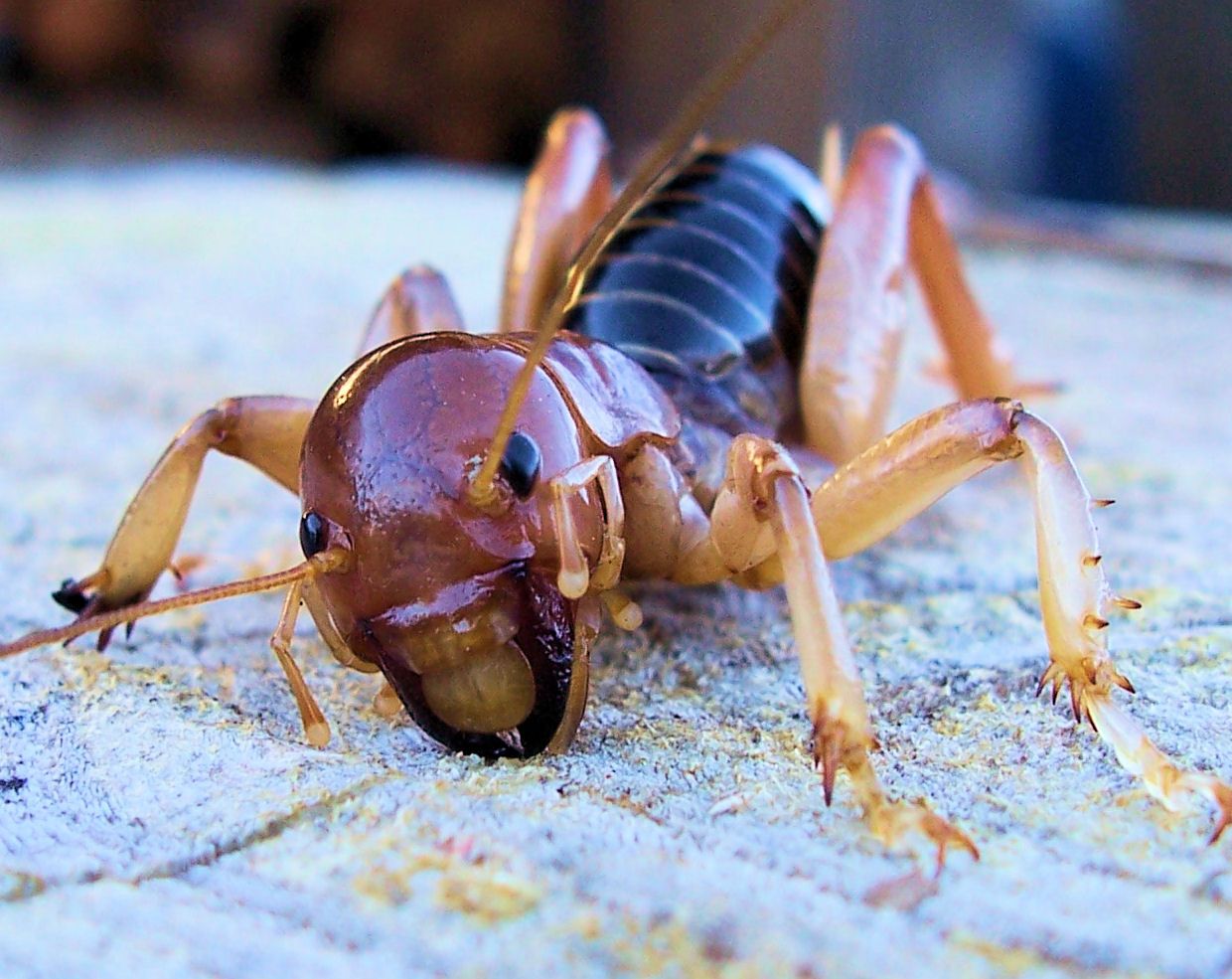
7 thoughts on “How to Correctly Identify and Remove Potato Bug”